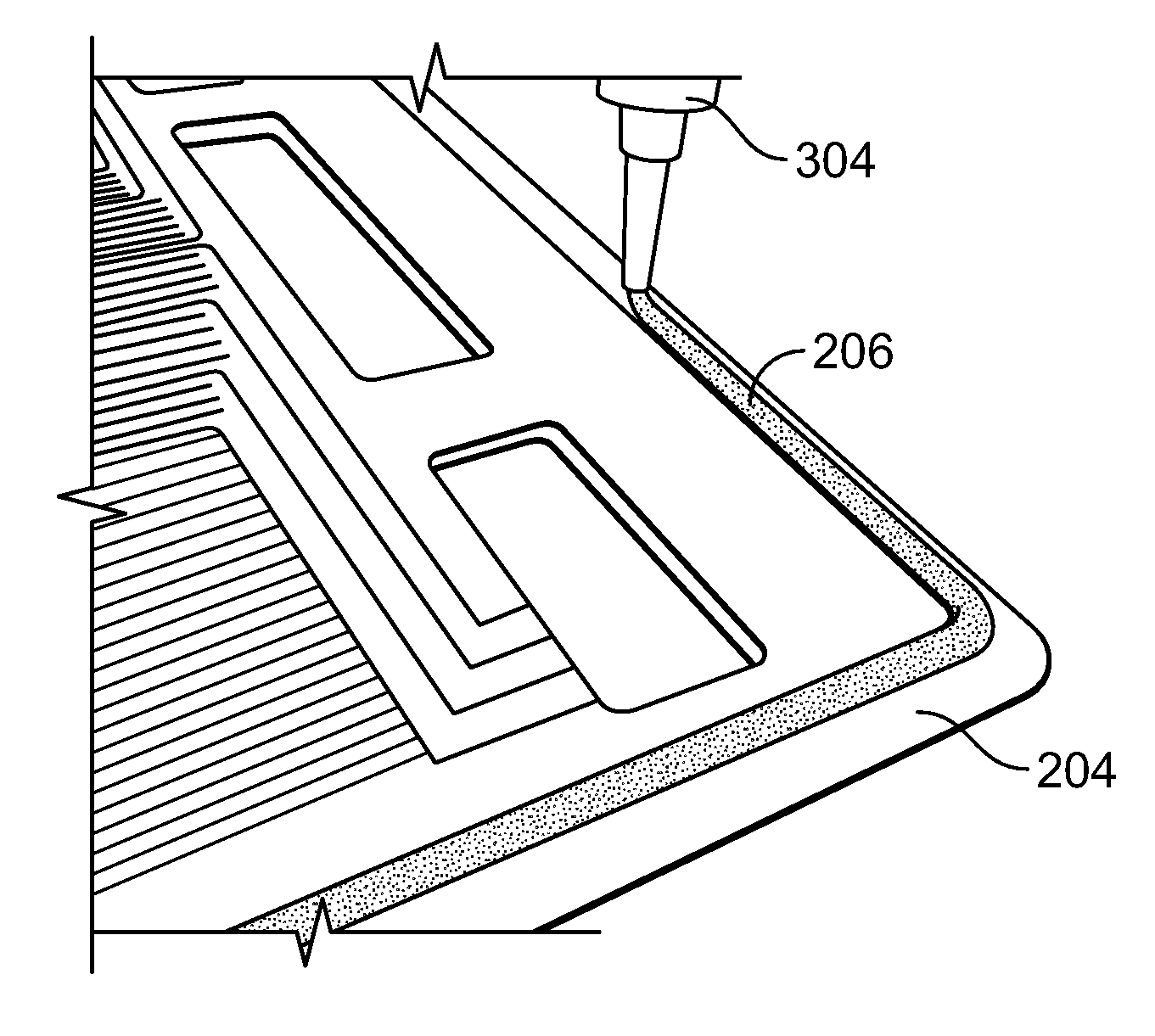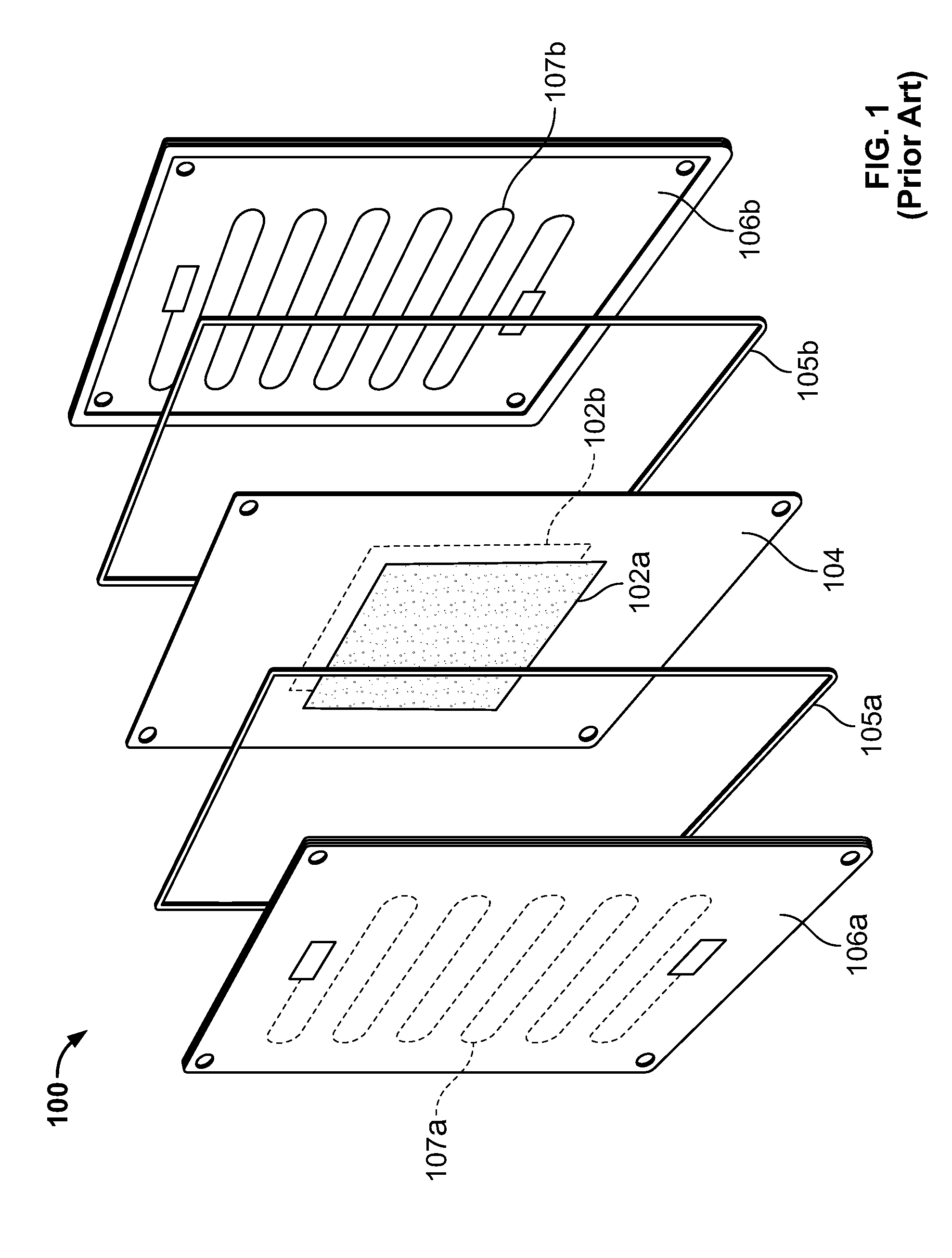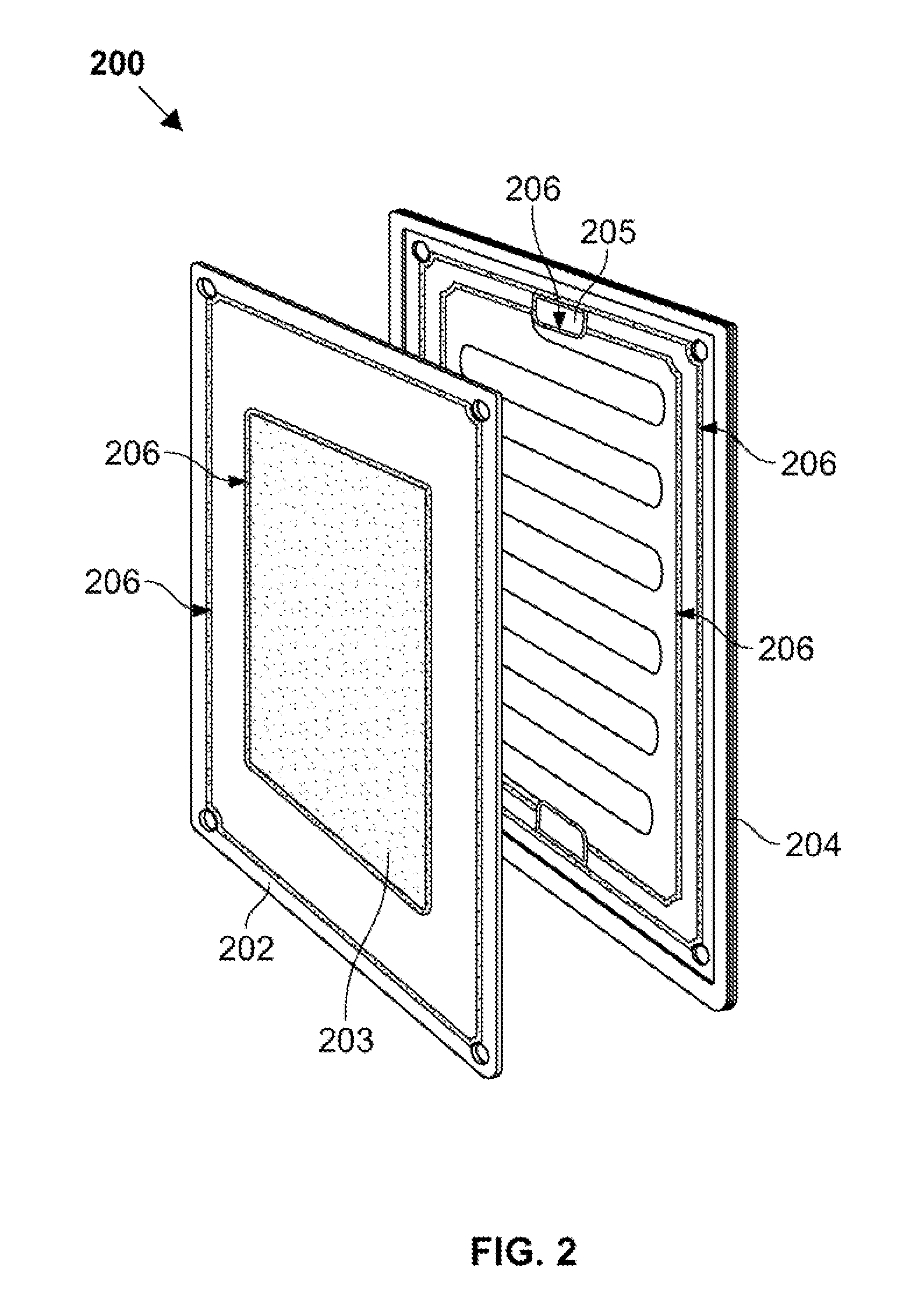Composite multilayer seal for PEM fuel cell applications and method for constructing the same
a fuel cell and multi-layer technology, applied in the field of fuel cell multi-layer seals, can solve the problems of water and heat formation, difficult silicone use in high and difficult silicone use in low-temperature fuel cell applications
- Summary
- Abstract
- Description
- Claims
- Application Information
AI Technical Summary
Benefits of technology
Problems solved by technology
Method used
Image
Examples
Embodiment Construction
[0020]The present invention is directed at a novel composite multilayer seal for PEM fuel cell applications. For purposes of clarity, and not by way of limitation, illustrative views of the novel composite multilayer seal and methods for constructing the same are described with reference to the aforementioned accompanying drawings.
[0021]In FIG. 1, a disassembled view of a known fuel cell arrangement 100 is provided. Fuel cell arrangement 100 is comprised of a PEM (not shown) at its core for conducting only positively charged ions. The PEM is fixed between a pair of catalysts, wherein a first catalyst is provided on one side of the PEM core for facilitating an anode reaction (i.e., H2→2H++2e−) and a second catalyst is fixed on an opposing side of the PEM core for facilitating the cathode reaction (i.e., O2+4e−+4H+→2H2O). The most common catalyst employed in the construction of PEM fuel cells is platinum powder or nanoparticles. Platinum is thinly coated onto a single side of a porous...
PUM
| Property | Measurement | Unit |
|---|---|---|
| temperature | aaaaa | aaaaa |
| thickness | aaaaa | aaaaa |
| thickness | aaaaa | aaaaa |
Abstract
Description
Claims
Application Information
 Login to View More
Login to View More - R&D
- Intellectual Property
- Life Sciences
- Materials
- Tech Scout
- Unparalleled Data Quality
- Higher Quality Content
- 60% Fewer Hallucinations
Browse by: Latest US Patents, China's latest patents, Technical Efficacy Thesaurus, Application Domain, Technology Topic, Popular Technical Reports.
© 2025 PatSnap. All rights reserved.Legal|Privacy policy|Modern Slavery Act Transparency Statement|Sitemap|About US| Contact US: help@patsnap.com



